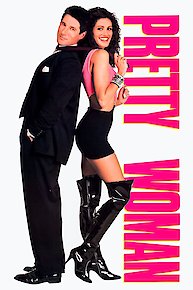
Reve et realite
Where to Watch Reve et realite

Reve et realite, released in 1901, is a fascinating silent film that explores the themes of dreams and reality through a captivating narrative structure. Directed by an early pioneer of cinema, the film offers audiences a glimpse into the imaginative possibilities of film storytelling at the turn of the century.
Set against the backdrop of a bustling, modernizing world, Reve et realite presents a unique dichotomy between the ordinary life of its protagonist and the more fantastical experiences that unfold in a dreamlike state. The film cleverly plays with visual metaphors and symbolic imagery, inviting viewers to ponder the boundaries between the real and the imagined.
The film opens with a serene portrayal of daily life, where we meet its central character—a reflective and somewhat lonely individual who seems to be yearning for something beyond the confines of his mundane existence. This character serves as a relatable figure, resonating with the audience's own experiences of longing and aspiration. The production employs innovative techniques for its time, merging realism with surrealism to portray the complexities of human emotions.
As the narrative progresses, the protagonist sits down, eventually succumbing to the allure of sleep, which sets the stage for the dream segment of the film. The transition from reality to the dream world is marked by fluid movements and playful cinematography that hints at the dream's abstract nature. What follows is an exploration of the protagonist's desires, fears, and fantasies, encapsulated in a series of imaginative vignettes.
In the dream world, the film employs rich visuals, fantastical settings, and whimsical characters, which not only enhance the surreal experience but also serve to externalize the protagonist's internal struggles and wishes. Each scene is crafted with a sense of wonder and curiosity, inviting viewers to immerse themselves in a kaleidoscope of emotions and sensations. The juxtaposition of these dream sequences against the earlier reality highlights the stark contrast between the protagonist's desires and the life he leads.
The dream world is populated by eclectic figures that symbolize various aspects of the protagonist’s psyche—embodying desires for freedom, adventure, and delight, all of which are implausible in his waking life. The film captures the essence of these dreams with imaginative storytelling techniques such as quick cuts, whimsical props, and exaggerated actions that contribute to the overall surrealist aesthetic.
Throughout Reve et realite, the viewer is drawn into the vibrant tapestry of dreams filled with intriguing characters and situations. The unpredictability of the dream sequences allows for a fluid narrative progression, providing a sense of movement and dynamism that keeps the audience engaged. The characters, while often fantastical, carry an emotional weight, ensuring that viewers can connect with the protagonist's journey even as it oscillates between reality and fantasy.
One of the standout features of the film is its ability to evoke strong emotional responses through naturalistic performances despite the limitations of silent film acting. The facial expressions and gestures of the actors communicate a spectrum of feelings, ensuring that the audience remains deeply involved in the protagonist's internal conflict. This non-verbal communication is particularly effective in conveying the essence of dreams—both the beautiful and the nightmarish—further solidifying the film's exploration of the human psyche.
As the film nears its conclusion, viewers are invited to reflect on the nature of their own dreams and realities, pondering the significance of the visions that dance through their minds as they sleep. The ending leaves audiences with a lingering sense of contemplation about the nature of existence, the contrast between aspirations and reality, and the powerful role of imagination in shaping human experience.
Reve et realite stands as a testament to the innovative spirit of early cinema, showcasing storytelling that transcends language and culture through visual poetry. Its thematic focus on the relationship between dreams and reality resonates universally, echoing the eternal human quest for meaning, fulfillment, and escapism. The film is not merely a visual delight but a profound exploration of the psychological and emotional landscapes that define human existence.
Though it belongs to a bygone era, Reve et realite persists as an influential work in the cinematic canon, inspiring future filmmakers to delve into the depths of dreams and the complexities of the human experience. As such, it remains a classic piece of art that continues to evoke fascination and introspection, charming audiences with its timeless exploration of what it means to dream and the realities that shape our lives.
Reve et realite is a Romance, Comedy movie released in 1901. It has a runtime of 1 min. Critics and viewers have rated it moderate reviews, with an IMDb score of 5.1..



















